April 19 - April 25, 2023






ALAN Nelson is a committed cyclist with the massive goal of being inducted into the International Cycling Union‘s (UCI) cycling Hall of Fame.


According to Mr Nelson, he only needs one more UCI championship to be inducted into the UCI Hall of Fame and is determined to do so this year in Glasgow.

“If I get another UCI championship, actually, I‘m going to reframe that, when I get another UCI championship, I will go into the hall of fame,” he said.

Alan raced superbikes from when he was 17 years old until he was 31, when his first child was born and he moved on to racing in triathlons.

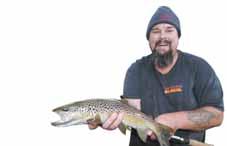
He returned to cycling when he was 41 but suffered from chronic fatigue, which stopped him from competing for three years.




“It was one of those mystery things where haematologists say, ‘the good news is we can‘t find anything, and the bad news is we can‘t find anything and it‘s probably some kind of virus,” Alan said.
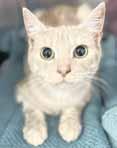
“It more or less ran its course, but looking back it was from overtraining and not getting in enough recovery, which everyone has identified as critical and just as important as the training part these days.”
■ Continued page 6
HOW often do you brush your teeth, twice a day?
What about your dog or cat, how often do they brush their teeth?
Unless you have a worthy Guinness World Record pet you won’t catch your dog or cat maintaining their own pearly whites with a toothbrush.
It’s important to know that puppies and kittens have baby (deciduous) teeth that come through in the first few weeks of life.
These will fall out from three months old, and by six months most dogs will have all their permanent or adult teeth.
Something important that your vet will check in your first puppy visit is the placement (occlusion) of their teeth.

Some dogs and cats with underbites or overbites which will have teeth
WANGARATTA RSPCA has many lovable creatures waiting for the perfect family to take them home.
If you want to add a furry friend to your home, call (03) 5722 2874 or visit the shelter at 1 Connell Street Wangaratta.
Wangaratta RSPCA’s animal adoption source code is BR100934

PRINCESS PEACH: As her name suggests, Peach is a very sweet girl. She is affectionate and will give you lots of cuddles.
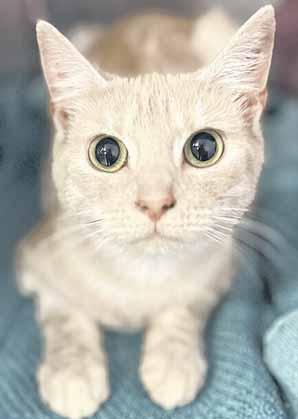
Peach is very friendly and may not mind the company of another feline in her new home.
Peach’s microchip number is 956000015932506.
RSPCA
with Dr Maddie, Veterinariansitting outside of their normal position.
If these teeth are digging into the roof of the mouth, or otherwise impacting other teeth or gums, then they will be painful for your pet and require removal.
When the adult teeth come through it is very important to keep them clean.

Dental dry food, chews, rinse, and teeth brushing can all help to maintain good oral health for your pet.
Please feel free to check with your vets and vet nurses to find what routine and products work best for you pet and family.
THERE are still plenty of great fishing options around North East Victoria at the moment as we head into the second half of autumn.
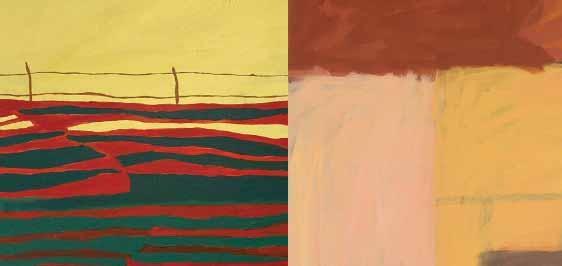
Last week I fished Lake Eildon in the Fords Inlet area. I was trolling small lures from my kayak and managed to catch 3 nice yellowbelly, with the biggest being 44cm. I also caught a handful of redfin. Only one was big enough to keep.
I caught fish on 3 different lures, however it was the small Old Mate diving lure in bright green that caught the most fish.
On Saturday morning I attended the “Carpathon” carp fishing competition at the Winton Wetlands. There were well over 100 people in the competition which attracted people from as far away as Gippsland and Griffith.
There were close to 200 carp caught, with the biggest one being a shade under 70cm.
Everybody had a wonderful time and there were
lots of kids with smiles on their faces which was a truly beautiful sight.
If you’re looking for somewhere to take the kids fishing with easy and safe access to the water, there are still plenty of carp biting at the Winton Wetlands. You do need to go to the right spot though. The main swamp has very few fish in it. You need to head to the area known as the Borrow Pits, or the Canoe Ponds. These are the very large and deep dams that are found directly below the old Lake Mokoan Wall. This is where the dirt was taken to build the wall many years ago.
You can drive to within 100 metres of the water and have to walk the last little bit.
Reports of Murray cod being caught in the Ovens River are few and far between, however, friends of mine camped near Peechelba over Easter and managed to catch a few using cheese as bait. They said it was slow, but there’s still a few on the chew.


A YOUNG Wangaratta man, holidaying overseas, was caught in the great San Francisco earthquake on April 19 1906.

PHOTO:

He was the eldest son of Wangaratta draper T. Mitchell who had the big corner store with the clock, where the Commonwealth Bank stands today. Young Mitchell was staying in the Winchester Hotel, San Francisco when the quake struck. In July, biograph moving pictures were advertised of the San Francisco earthquake to be screened in Wangaratta.
Just about everyone in Wangaratta turned up, including the Mitchell family.
NATUROPATHS consider iron to be the super nutrient of pregnancy, largely because of its ability to dramatically improve the wellbeing of the mother and reduce serious issues in the pregnancy.
Anaemia of pregnancy also plays a role in postnatal depression and babies born to mums with anaemia of pregnancy can have increased infection rates and poor brain development.

Iron deficient mums have a harder time breastfeeding and are more tired than iron replete mums.

Iron excess can also be a serious health risk for both mother and baby so never supplement without discussing with a naturopath first.
For the most part, iron deficiency is easily treated, but as you need twice as much iron in pregnancy, many women are not meeting demands through diet and low iron levels are being picked up far too late in the pregnancy for basic iron supplements to make much change.
Given that many of these supplements are constipating at larger doses, many mums are opting out of treatment before the problem is fixed.
Managing optimal iron levels and pre-empting the natural drops of iron as your baby grows and draws on your iron stores is something that we have worked hard at mastering.
During pregnancy we never wait for iron to get so low that anaemia is diagnosed - as soon as we see iron stores dropping or as you are leading up to a growth spurt we act swiftly with food
therapy, herbs that build blood and work in a variety of ways to help both absorb and release more iron.
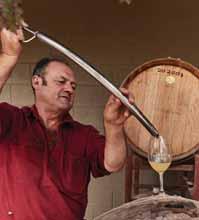
These herbs often have a secondary action to settle the stomach, reduce reflux and reduce constipation.
If you feel very tired, light headed or drained in your pregnancy ask to have your iron levels tested and seek our support to access a quality supplement that won’t constipate you and devise a plan that will have you bouncing before you know it.
If your practitioner mentions that your iron is “borderline/ lowish” during pregnancy but they are not ready to start treatment, you can definitely start on iron rich foods, however in most cases this will not be adequate.
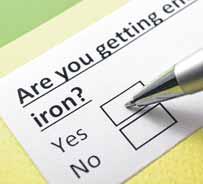
This is the time to seek naturopathic help.


Herbs and non-constipating supplements, in combination with diet, will help you avoid the serious consequences of low iron, rather than waiting for you to be so deficient that you require an iron infusion.
THE nights have a noticeable nip in the air, and the mornings are getting darker.
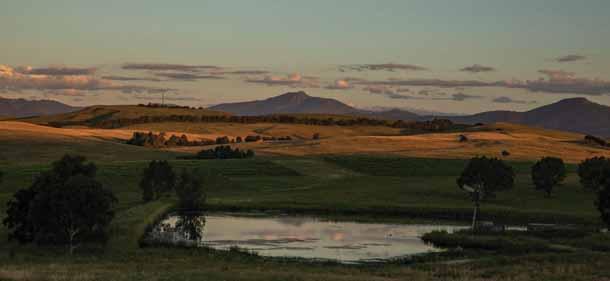
There has been an obvious shift from summer to autumn in the last couple of weeks, which sets the scene to begin or resurrect your herb garden.
Now is a great time to plant or sow your herbs to support you and your family through winter and spring.
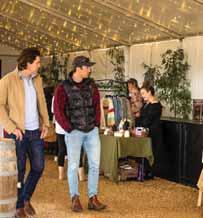
Coriander, garlic, marjoram, oregano, parsley, thyme, tarragon, lemongrass, mint, rosemary and shallots are just a few that you can plant now.
Parsley and coriander planted in autumn grow particularly well over winter, as they don’t bolt to seed as they can in summer.
Consider planting a few seeds every month so you have a succession of plants ready for picking.
Once you have planted these herbs you rarely have to replant as they re-seed easily and prolifically.
Most herbs enjoy a sunny, well prepared bed, however some herbs like those from the mint family prefer a partly shaded area.
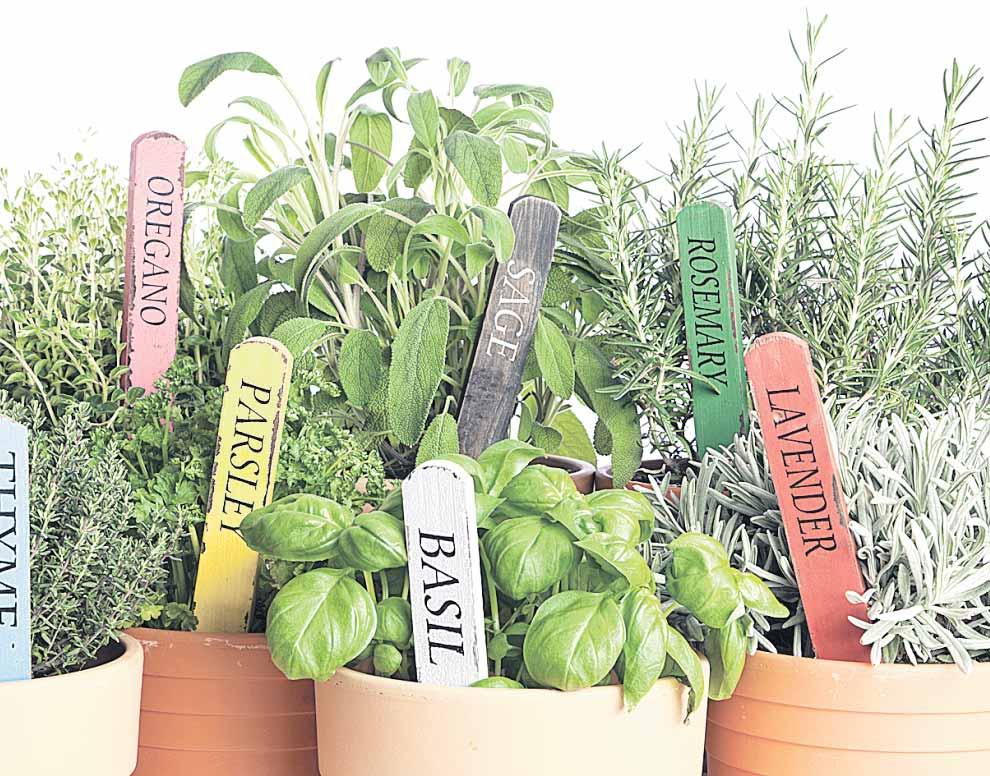
I highly recommend you keep mint varieties in a pot and
on a concrete base, dispose of prunings in a plastic bag and leave in the sun before disposing of them as they root easily in the paddock, gardens and in grass areas.
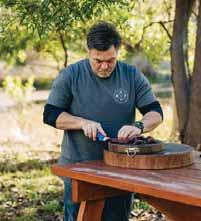
Kale, beetroot, broccoli, cabbage, carrot, cauliflower, celery, English spinach, lettuce, parsnip, peas, radish, silverbeet, broad beans, brussels sprouts, Chinese cabbage, onion and spinach can all go in now too.
Most herbs will be grateful for a feed or two from time to time but it isn’t always necessary.
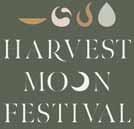
Heavy feeders like leafy greens and Brassicas love a liquid fertilise every 10-14 days, while actively growing.
If you don’t have a garden area don’t worry, herbs and most veggies perform very well in autumn in pots and troughs.
Herbs can be turned into home remedies such as inhalations for sinus congestion and viruses, preserved in honey for tickly coughs, oxymels to treat viruses, pesto, garnishes and flavour in slow cooked meals over the cooler months to keep you and your family in tip top shape.
If you would like to learn how to make your own home remedies, follow us on social media or touch base via our clinic.
■ From page 1
Having overcome the chronic fatigue, Alan called up his former coach three and half years ago and got back on his bike to compete at both a national and international level.

“I called up my old coach and said ‘I‘ve got a bit of an itch I need to scratch, I have a bit of unfinished business‘,” he said.
So far Alan has two UCI titles, one World Cycling Masters championship, and is currently undefeated on a national level.
Alan attributes his success to his training regime which is mostly dictated by an app that is visible to both himself and his coach.
The app helps by telling him metrics such as heart rate and lets him know whether he needs a rest from training that day.
He usually does five or six days of training a week.
“It doesn‘t matter how I feel, I might not feel like it but the data says
what you‘re doing so that‘s what I do,” he said.
“It‘s one thing to know how you feel, another to have data that supports it scientifically and recovery is super important.”

According to Alan, the app‘s algorithm is very specific on how much training he needs to do and leads to him riding around 300kms and 4000 vertical metres a week.
Alan said he especially never skips completing his vertical metres.
He also occasionally trains with a group of younger people while in Australia as he believes they‘re going to push him forward and make him better.
“You need to train with people better than you, towing people around is not going to push me along,” he said.
Alan also plans to travel to Europe in May, three months ahead of his race in Glasgow, so he can train in similar conditions to what he will face.
“It‘s a big commitment but you can‘t


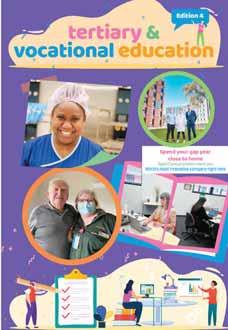
race in Europe and train in Melbourne or the Victorian winter,” he said.
“It doesn‘t work because you‘re losing too many days and you need to be at altitude in big mountains.
“To get used to the altitude, I often sleep at altitude.”
Alan said he is hoping for good weather in his upcoming race in Glasgow as races often continue regardless of the rain.
“The only time I’ve seen a race cancelled was during a landslide in the Tour de France, however I’ve never been in a race that‘s been cancelled, even when we were racing in the snow in Bosnia.
“For the last 15km of the climb, I couldn‘t feel my toes, couldn‘t feel my feet or my fingers,” Alan said.
“To change gears I had to look where the lever was and push it on the handle bars, because a part of the brake assembly is the lever; that was not fun.”
Alan also owns a wine business,

Nelson Wine, which he has recently stepped back from running in order to focus on his racing.
“I stepped back because I‘ve got really good people and I guess, in my own way, I‘m letting them shine,” he said.
While Alan does receive some criticism and jokes about him being “obsessive” he said being a little
obsessed is the only way to be good at something.
“It‘s very hard to half do something if you‘re going to do it well,” he said. “Cycling requires commitment and there‘s no way I want to do it every day but I just keep focusing on the goal of winning another UCI championship and making it into the Hall of Fame.”

The following opportunities now exist for enthusiastic, safety focused people with suitable experience and qualifications. Please visit our website to find out more about current positions available across Mawsons business divisions.


Bendigo – Concrete Truck Driver – BEND001
Heathcote – Concrete Site Manager – HEAT002





Wangaratta – Concrete Truck Driver – WANG001


IT’s fair to say that one of mankind’s greatest inventionsthat of the humble wheel - has been taken for granted.
If the average person was asked, it’s a fair bet that they couldn’t begin to explain the origin of the wheel, yet every entrepreneur and their dog is quick to claim that they have created the best invention since this miraculous method of motion.
To these trumped up merchants I give a derisive guffaw, and to you, dear reader, I would elucidate some enlightening facts surrounding this feat of engineering.
Straight from the cogwheels

of the human mind
Most early inventions of humanity could trace their origins to natural phenomenon.
The invention of fire is traced back to early humans observing lightning strikes, the axe came from natural sharp stones, medicine from consuming natural grown flora, pitchforks from forked sticks.
Even the much later invention of the aeroplane came from observing birds in flight.

The wheel, however, is truly set apart from these other inventions, as there are simply no wheels observable in nature - with the loose exception of rounded rocks and logs.
Thus, the wheel is considered a divergence in human invention - from improving upon what nature already provided in a rudimentary form, to actively changing the natural world to better accommodate us.
The wheel was late to the party
Contrary to popular depictions, the wheel was a relatively late invention.
The oldest known example of the wheel dates back to 3500 B.C. during the Bronze Age, and was discovered by archaeologists excavating a site in what was then Mesopotamia.
By this time, human beings were already planting crops,
herding domesticated animals, had some form of social hierarchy, and had already invented weaving, rope, and boats.
One of the reasons why the wheel was invented only at this point in history is due to the fact that metal tools were needed to chisel fine-fitted holes and axles.
This leads to the next reason – the wheel was not just a cylinder rolling on its edge.
It was a cylinder that was connected to a stable, stationary platform.
This wheel-axle concept was a stroke of genius, but making it was a challenge.
The ends of the axle, as
well as the holes in the centre of the wheels had to be nearly perfectly smooth and round.
The first wheel was laid flat, not on it’s edge
Given the sheer complexity of the wheel, axle, platform combination, it’s not really surprising that the first wheel was not used for transport at all, but as a rotating platform for pottery making.
The first wheel-as-transport imagery was found in Poland, and the first axle fitted wheel, known as the Ljubljana Marshes Wheel, was dated at 3150 B.C. - several centuries after the potter’s wheel was dated.

Someone actually managed
to reinvent the wheel I had to include this last fact for the pure amusement factor.

John Keogh, a freelance patent lawyer in Australia, submitted a patent application for a “circular transportation facilitation device” in May 2001, shortly after a new patent system was introduced in Australia.


He wanted to prove that the cheap, streamlined system, which allows inventors to draft a patent online without the help of a lawyer, was flawed. His “wheel” was issued a patent.





Only an Aussie could perform a feat so simultaneously stupid and clever.

